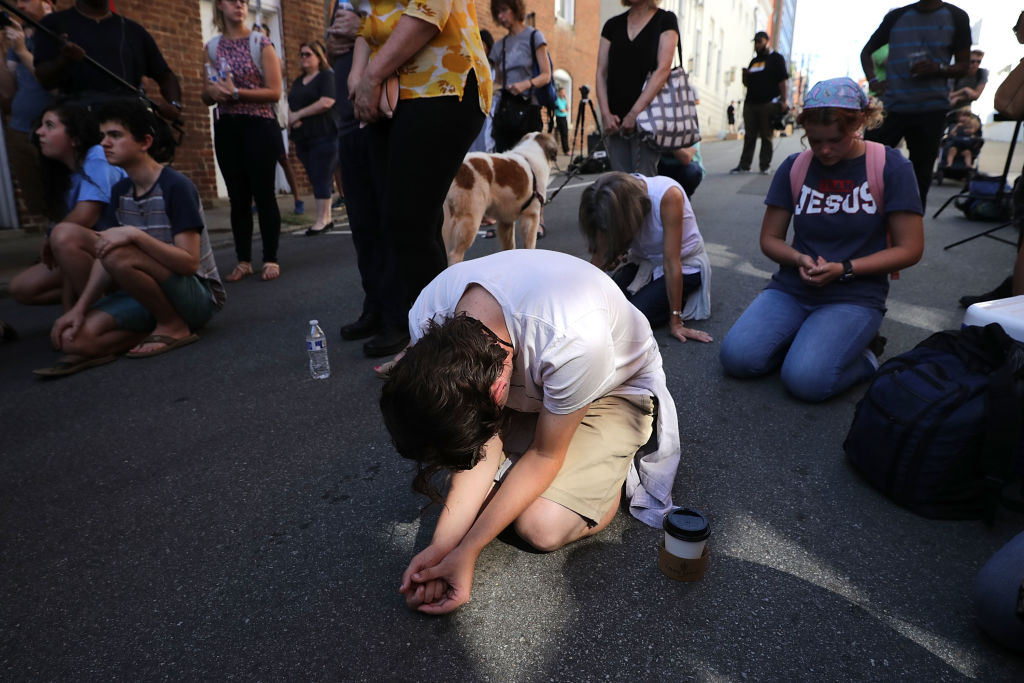By: Kelly Shackelford and James C. Ho – thehill.com – September 1, 2017
The day after the U.S. Supreme Court ended its 2015-2016 term, three justices issued a troubling statement. It was four months after the death of Justice Antonin Scalia, and the Court had just fallen one vote short of taking a significant religious freedom case. In response, Justice Samuel Alito, joined by Chief Justice John Roberts and Justice Clarence Thomas, expressed “great concern” about the “ominous” future for religious freedom in America.
They were sadly prescient. Earlier this week, the federal court of appeals in San Francisco announced that a school district in Washington State could fire high school football coach Joseph Kennedy for nothing more than praying by himself after each game. Another federal court of appeals recently told Mary Anne Sause, a public housing resident in Kansas, that two officers could force her to stop praying in her own living room, for no reason whatsoever.
In sum: You don’t have a right to pray — at work, or at home.
Coach Kennedy is a Marine Corps veteran who has dedicated his life to serving student athletes. But after eight distinguished years as a Bremerton High School football coach, his employer made a discovery it deemed too troubling to tolerate: Coach Kennedy was praying on the football field.
After an opposing team complimented the coach for bringing both teams together for an inspirational post-game speech and prayer, the district superintendent sent Coach Kennedy a stern letter of reprimand.
In response, Coach Kennedy stopped praying during his post-game speeches. Instead, he waited until his players were busy singing the school fight song and engaging in other post-game festivities, and then prayed alone, silently, for less than half a minute.
This was apparently not enough for the school district. The district instructed him to cease any “demonstrative religious activity” whenever “readily observable to … students and the attending public.”
So he could pray in a closet — but not in public.
When he refused this absurd demand and once again knelt on the football field alone for a brief prayer, the district suspended him.
In late August, the federal court of appeals in San Francisco sided with the district. In Kennedy v. Bremerton School District, the Ninth Circuit held that a public school teacher or coach has no right to engage in any form of expression at school, if the speech or conduct is “in the presence of students and spectators.”
So a school can force a teacher to remove her hijab before entering the classroom building, and require a lunchroom monitor to hide under the table before giving thanks for his meal.
Ms. Sause wasn’t at work when the government told her to stop praying — she was in her own living room.
As the court explained, two officers showed up at her front door one evening to investigate a noise complaint. After she let them into her home, they told her that the Constitution was “nothing” — “just a piece of paper” that “doesn’t work here.” One officer then left to confer with her neighbor.
The other officer told Ms. Sause that she “was going to jail,” but that he “didn’t know why yet.” Overcome with fright, she sought solace in prayer. Terrified, she even asked the officer for permission to pray. After receiving permission, she dropped to her knees and began to pray silently.
When the other officer returned, both officers mocked her for praying, and commanded her to “get up” and “stop praying.”
They then proceeded to berate and harass her, telling her “no one likes you here” and “to move back from where you came from.” They made her sit and watch as they flipped through a booklet to identify an offense that they could charge her with. They eventually left her home and instructed her to turn down the volume on the talk radio show she was listening to.
One judge rightly observed that “this is one of the most disturbing fact patterns one can imagine.” The officers “acted with extraordinary contempt of a law abiding citizen” and “should be condemned.” Their actions were “inconsistent with any legitimate law enforcement purpose.”
Yet, in Sause v. Bauer, the Tenth Circuit nevertheless held that the officers enjoyed “qualified immunity” and could therefore stop her from praying.
These cases are not over. The Supreme Court will soon have the opportunity to consider the appeals of Coach Kennedy and Mary Anne Sause. Last year, three justices expressed grave concerns about the future of religious liberty in America. And this year, President Donald Trump appointed Justice Neil Gorsuch to fill Scalia’s vacancy. It takes four votes for the Supreme Court to add a new case to its docket.
This is a remarkable moment in our nation’s history. Over two centuries after our Founders established this great country and enshrined religious freedom into our Constitution as our first liberty, government officials and courts are now telling us we can’t pray — at work, or at home.
Kelly Shackelford is president and CEO of the First Liberty Institute, the largest legal organization in the nation dedicated exclusively to protecting religious liberty for all Americans. James C. Ho is co-chair of the appellate and constitutional law practice group of Gibson, Dunn & Crutcher LLP. First Liberty and Gibson Dunn represent Coach Kennedy and Ms. Sause.
Source: OPINION | US courts: Can’t pray at work, can’t pray at home
 Listen Online
Listen Online Watch Online
Watch Online Find a Station in Your Area
Find a Station in Your Area









 Listen Now
Listen Now Watch Online
Watch Online
